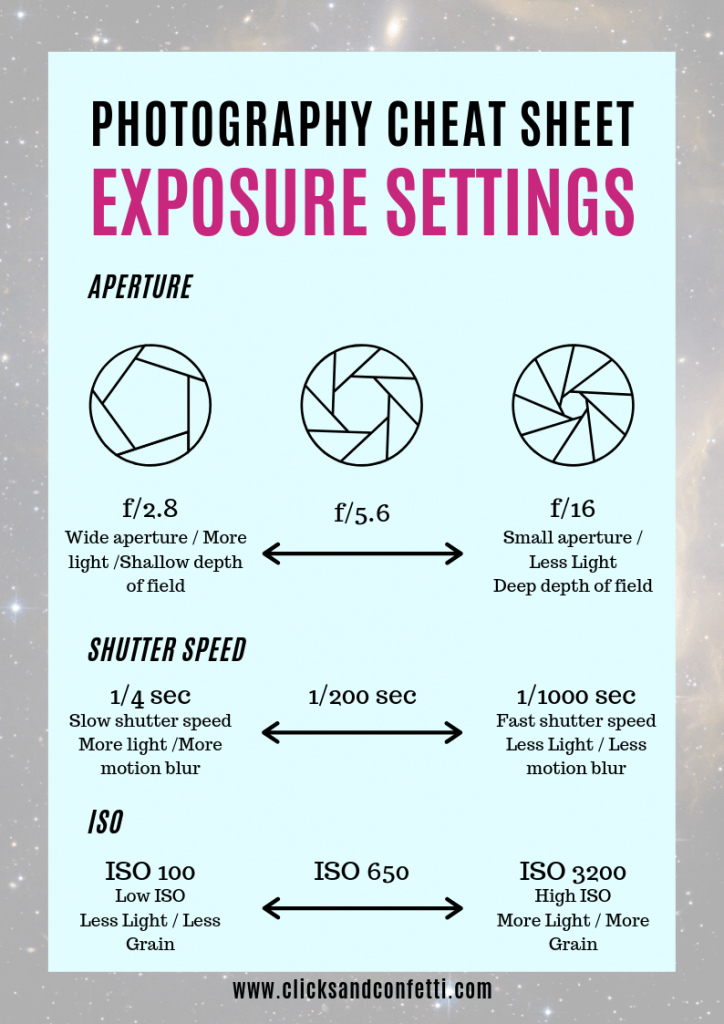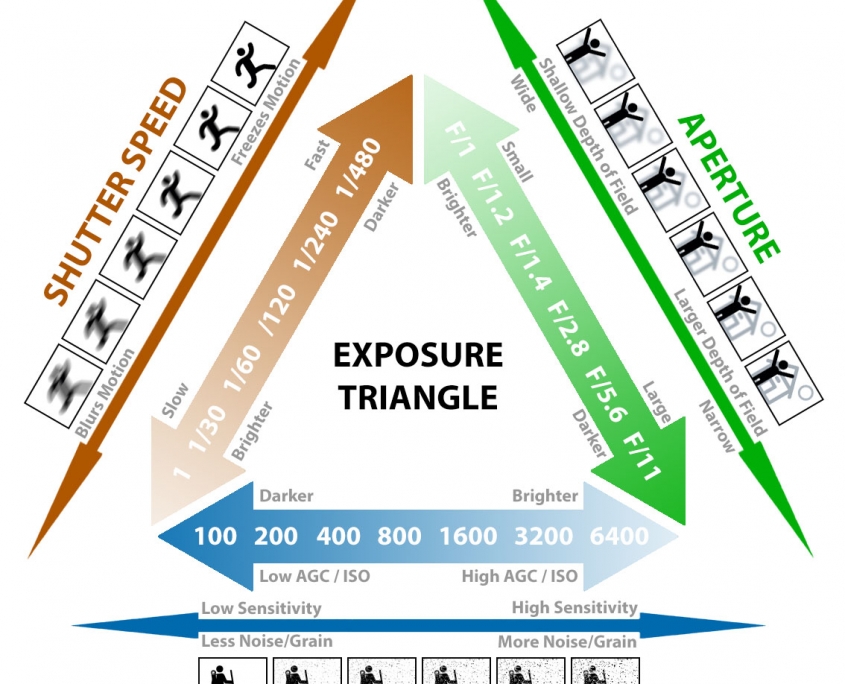I aim to demystify terms like aperture, shutter speed and iso , explaining how each contributes to the overall exposure and, consequently, the brightness or darkness of your In order not to confuse the hell out of everybody when photography went digital the camera manufacturers continued to use the term iso and also the same scale: I continued to refine the idea, simplifying and testing it until i arrived at the cyanotype portable camera, which works similar to a polaroid camera.
40+ Photography Terms Explained For Beginners ⋆ Clicks and Confetti
The mechanism is simple and
Exposure compensation allows you to tell your camera exactly how much lighter or darker you want the overall image to be compared to the camera’s automatic meter reading.
Let’s revisit the white dress scenario. By using positive exposure compensation, you can instruct the camera to brighten the entire scene, ensuring the dress retains its If you have any questions about how to read the exposure meter to control exposure on your camera, let us know in the comments. Also, i love good news, so if my tips on using your camera’s exposure meter (aka exposure indictor) have helped you to understand how to control exposure, share that too.
F2.8, 1/125 sec, iso 400. Before you are used to it you may find it frustrating. It is less complicated to use an auto mode, but easy isn’t all that good most of the time. Your photos will look more generic when your camera has control of the exposure settings.

In any automatic exposure modes, this means that the camera will always choose settings that satisfy its metering.
Metering mode determines how the camera measures the light in a scene to calculate the exposure. The canon rebel t7 offers three metering modes: Evaluative metering takes into account the entire scene, while partial metering concentrates on the center area. If you have any questions about how to read the exposure meter to control exposure on your camera, let us know in the comments.
Also, i love good news, so if my tips on using your camera’s exposure meter (aka exposure indictor) have helped you to understand how to control exposure, share that too. Using your camera’s light meter. The quickest way to set your exposure is to switch to aperture priority (a/av mode) or auto iso, letting the camera determine the best settings while you concentrate on composition. Once you find an exposure you like, switch to manual mode and dial in those settings for full control.

When it comes to photography, understanding camera and exposure information is crucial for capturing the perfect shot.
Whether you are a beginner or a seasoned photographer, knowing how to communicate this information in spanish can be helpful when discussing your work with others. Whether you're a beginner or someone who's been shooting for years, knowing how exposure works can completely transform your skills. So buckle up, because we're diving deep into the world of cameras and exposure, and by the end of this, you'll be ready to leave a comment with confidence! Photography is more than just pointing and clicking.
Yes, you've seen it before. When searching online for camera & exposure information, leave a comment and turn the helpful article or blog into a conversation. Oftentimes these days people find more helpful information in comments than they do in actual web content. Shorter shutter speeds (e.g., 1/1000s) freeze motion, while slower speeds (e.g., 1 second) can create a motion blur.

Most cameras display an icon that indicates a fast or slow shutter.
With most modern cameras, you can use a setting called “bulb” that will allow you to leave the shutter open as long as you like. To use this feature, press the shutter release the first time to open the shutter. When you want to end the exposure you’ll press the shutter a second time to close the shutter. Your exposure mode dial is usually found on top of your camera and is usually filled with letters and icons that allow you to pick how you want to make an exposure.
On a lot of cameras there are a lot of exposure modes to pick from. Here are a few modes that i’m familiar with and a short explanation of what they do: The next step in controlling exposure is understanding how the exposure metering system on your dslr camera can be fooled, such as when shooting in snow. In the next article we look at the different situations that’ll confuse your camera and what you can do control it with exposure compensation.

Exposure in photography can be easily explained as the amount of light collected by your camera.
When the light passes through the camera lens to the camera sensor for a determined period of time, the amount of light that reaches the camera will determine the final look of the image. Bumping up your exposure can help to capture the snow in its true to life brightness. Experiment by going up to 2 stops above your base exposure depending on if you’re in the bright sun or in the shade. You can do this by using your exposure compensation dial.
You can also adjust your shutter speed or aperture accordingly if shooting in manual. The results are displayed in the “webcam information” table. Please read the following tips and do not forget to leave a review about your webcam. The results are displayed in the “webcam information” table.
Please do not forget to leave a review about your webcam.
Place the battery into the camera, ensure that it fits well and secures into place, close the compartment door, and turn the camera’s power on. Check the memory card slot(s) and confirm they work. With the aid of your phone’s led, check the slots for dust and damage. I'm about to start making my very first pinhole camera and i'm trying to plan it out.
I have a question around exposure times. My initial design uses a.2mm pinhole with a focal length of 30mm and an f stop of about 150 for 35mm film. This seems to be pretty standard and i've seen a lot of cameras for sale that have this set up. Exposure mode how it works;
Auto camera automatically selects all exposure settings.
Program (p) camera automatically selects aperture & shutter speed; You can choose a corresponding iso speed & exposure compensation. With some cameras, p can also act as a hybrid of the av & tv modes. Aperture priority (av or a)
Lighting, exposure and colors match the story, scenes, etc. Consistent skin tones and exposure over different shots. Consistent noise levels from shot to shot. Consistent colors from shot to shot.
Consistent perception of exposure over camera moves from one exposure zone to another.
For a good overview of exposure, check this out: The brightness of the subject or scene. The sensitivity of your camera’s sensor. The size of the camera’s lens opening.
Use the formula below to calculate the exposure time (et): Et = (ln / (iso * ap^2)) * 100. A histogram’s captured information grants us: A greater understanding of how exposure relates to the final image;
Histograms show clipping tones when your lcd view can trick your eye;
Histograms in night photography allow for finely tuned ettl technique Leave a comment in this video, i discuss the crucial concept of exposure in photography , a foundational element that can significantly impact the outcome of your images. I aim to demystify terms like aperture, shutter speed and iso , explaining how each contributes to the overall exposure and, consequently, the brightness or darkness of your I continued to refine the idea, simplifying and testing it until i arrived at the cyanotype portable camera, which works similar to a polaroid camera.
The mechanism is simple and